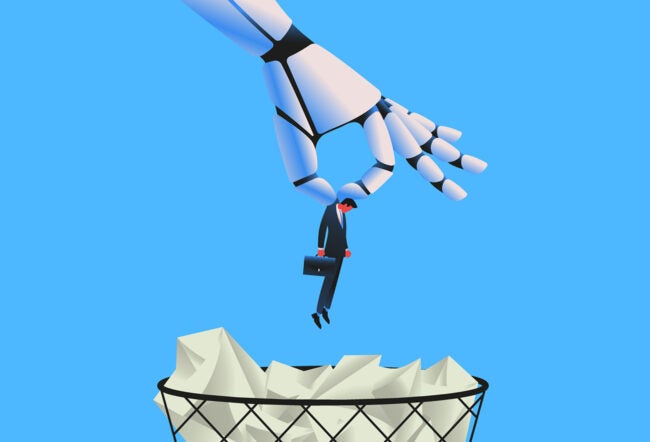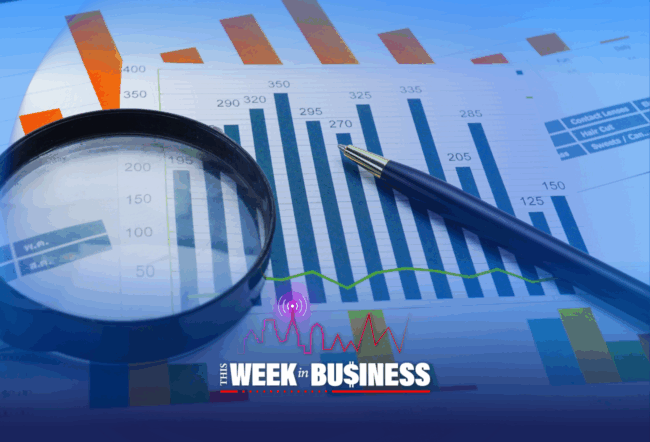Data analytics is becoming mission-critical to more and more businesses. One of the biggest challenges they face: recruiting data scientists.
“There are very few data scientists out there passing out their resumes,” LinkedIn co-founder Allen Blue said. “Data scientists are almost all already employed, because they’re so much in demand.”
That demand is no longer confined to the high-tech and software realms, Blue said. The past three years have seen “massive growth — 15 times, 20 times growth” in data science-based jobs in sectors like education, marketing and manufacturing. There’s a widening gulf between the needs of organizations and the abilities of job candidates to fulfill those needs.
How are firms grappling with the hiring obstacles? Blue, along with leaders from finance, health care, telecommunications and other industries, shared their insights at “The Future is Now: Closing the Data Analytics Skills Gap,” a town hall sponsored by Wharton Customer Analytics and WorkingNation. WorkingNation is a nonprofit campaign founded by philanthropist and venture capitalist Art Bilger that studies and reports on structural unemployment and the jobs skills gap. The summit was moderated by CNBC Contributor Michelle Caruso-Cabrera
What Caused the Data Analytics Boom
Delivering the keynote, Blue provided a window into how the field of data analytics arose and why it continues to grow, based partly on his personal experience developing LinkedIn. “It’s hard to believe that just 20 years ago, the whole notion of data science was brand new. I don’t think anybody had even used the term yet.” The increasing popularity of the internet was the catalyst, he said. Every action an internet user took was visible and trackable, leading to a huge and continuous volume of captured information. This, in turn, enabled novel types of research. Computer scientists began doing real-time analytics of how people were using particular products.
Blue reported that data science and machine learning-related jobs, taken together, represent five of the top 15 growing jobs in America today.
LinkedIn was founded in 2003, and around 2005 is when “the second half of data science came into play,” according to Blue. This second half involved not merely tracking people’s usage of products, but building new products for them to use. Blue said the effort employed machine learning and algorithm development to predict what information a user would find valuable. An early example of this, he said, was LinkedIn’s “People You May Know” feature: figuring out which other LinkedIn members a user might be familiar with (and be tempted to connect with) from previous jobs, schools and other Internet-documented life experiences.
By 2009, said Blue, LinkedIn had several million users. He and his colleagues came up with yet another angle on data analytics, this one a bit startling: With their vast database of members, they could try to shed light on large-scale economic trends.
“[We had] a great idea: Maybe if we could look at the jobs, the skills they required, the skills people had, and the companies they’ve worked for, we might be able to provide insights about where the skill gaps are and the best opportunities lie.”
LinkedIn has been engaged in this type of research ever since. One of the trends they’ve tracked involves data analytics job opportunities (so in an interesting twist, they’ve used data science to find out about the growth of data science). Blue reported that data science and machine learning-related jobs, taken together, represent five of the top 15 growing jobs in America today. And there are thousands more jobs in the field than there are qualified professionals to fill them.
Data Analytics: The New Sine Qua Non of Business
At the conference, a panel of business leaders from Morgan Stanley, PwC, Comcast and other organizations discussed the expanding role of data analytics. Tsvi Gal, CTO of infrastructure at Morgan Stanley, emphasized the importance of data science in today’s financial industry. “We [may be] in banking, but we live and die on information…. Data analytics is the oxygen of Wall Street.” He said Morgan Stanley uses data science to understand and anticipate customers’ behavior, as well as predict industry trends and regulatory changes. Another application is to ensure that client contact with the firm’s virtual assistants is on a par with human interactions. Data science is also essential to security, said Gal, protecting the company’s data from “anomalies, threats and behaviors that shouldn’t be there.”
On a similar note, Bhushan Sethi, a partner and joint global leader at PwC, said his firm is embedding data analytics in nearly every activity. “It’s in all our products and services,” he said. With clients, “it’s no longer good enough to say, here’s a workable strategy; this is kind of what it might look like. We have to actually visualize what those decisions would be; what are the outcomes; what that means to growth, to financials, to engagement.”
“We [may be] in banking, but we live and die on information…. Data analytics is the oxygen of Wall Street.”–Tsvi Gal
Ravi Kandikonda, a senior vice president of marketing strategy and planning at Comcast, talked about how his company — one of the largest media advertisers in the country — uses data analytics to inform decisions about where to spend advertising dollars. “How do you allocate in the traditional channels like TV versus digital channels that are up-and-coming and whose value is not yet proven? How do you make the case and … prove that it’s a key differentiator?” The sooner you get ahead of this curve, he said, it’s a competitive advantage.
On the nonprofit side, Steve Kern, a deputy director of quantitative sciences at the Gates Foundation, said that data analytics was helping his organization combat global problems by enabling it to compare information with other scientists and across a wide range of geographies. For example, the foundation is drawing on genomic data to identify common factors in different countries that cause childhood malnutrition and stunted growth.
Data analytics has arrived in the health care sector as well. For Kevin Mahoney, an executive vice president and chief administrative officer at the University of Pennsylvania Health System and executive vice dean for integrative services for Penn’s Perelman School of Medicine, one of the exciting promises of data science and especially data visualization is to “get something quickly that’s actionable to a doctor, so they [say], ‘I see that; I know what to do.’” Physicians could get patients the help they need without having to comb through many pages of notes.
He described how data analytics could potentially yield better approaches to managing serious diseases like multiple sclerosis. Many MS sufferers experience unpredictable relapses, but the overall progression of the condition is “actually very linear,” he said. Mahoney outlined a hypothetical scenario in which patients would frequently supply information about things like their walking ability, via smartphone or iPad. Data analytics would be applied to anticipate relapses and doctors would provide treatment before problems occur, greatly improving patients’ quality of life.
Tracking the Elusive Data Scientist
How are companies finding data analysts to hire? The panelists were in agreement that it was not a simple task. Kern said his organization collaborates with universities to work with students coming out of not only computer science, but other analytical backgrounds such as statistics and engineering. Blue noted in his talk that graduates in sciences such as physics, chemistry and biology could also be promising candidates. They “have already learned how to think about data properly, [so they] just need to learn the tools.”
Morgan Stanley runs a program for college graduates to learn data science, according to Gal. He noted that although the majority of these students come from STEM backgrounds, some are from the liberal arts and nevertheless do very well at the company. Gal said it was a myth that data analytics is mechanical work; instead, it requires a lot of creativity. “It’s not just that you run an algorithm and you follow it…. You need to look for patterns in the data that may or may not exist.” People with a liberal arts orientation “have stories, and can think in a different and more abstract way,” which can aid their success, he said.
“[Data analytics is] like digital: everyone’s going to need to have a base level of it.”–Bhushan Sethi
Gal added that bringing liberal arts graduates into data analytics also helps increase the number of women in a discipline heavily dominated by men, asserting that Morgan Stanley’s program had managed to achieve a 50-50 balance. “We believe that everybody should be participating in this journey, and it should not be male-only,” he said. He referenced Blue’s statement that currently there are four men for every one woman in the field, with men occupying the lion’s share of the leadership roles. Blue had commented that as machine learning and data science assumed a larger and larger role in everyday life, it was essential that data analysts come from different genders and backgrounds.
Several panelists noted that while it was important for their organizations to build up their data analytics personnel, there is also a growing need for employees in every job function to have a basic understanding of the discipline. In Mahoney’s world of health care, “even if you’re a [medical] technologist, you’re going to be in data analytics, [even though] your focal point might be more narrow than some of the Big Data we’ve talked about.” He said Penn Medicine was currently engaged in retraining its workforce in data science, helping people understand “how the data explosion can help you do your job better.”
Along the same lines, Kern commented, “it’s not that we need to have everyone out there go and become the next great data analyst, but we need to have people who understand how to consume the data,” and who can work productively with data scientists. PwC’s Sethi said his firm was “democratizing” data analytics, taking steps to ensure that all of its 55,000 U.S. employees acquired a basic comprehension of it.
Sethi added that he’s noticed many more organizations similarly looking into how to reskill their mid-career people. He observed, “I’ve got to believe that over the next few years, data analytics is going to be [extremely] prevalent. It’s like digital: everyone’s going to need to have a base level understanding of it.”



